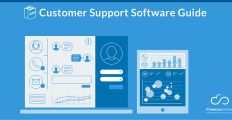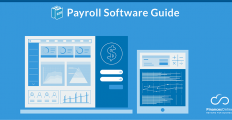 Regardless of the rationale for getting into business, history shows that there is a steep learning curve for many owners, with most lacking the financial acumen required to efficiently control the growing requirements of a new business.
Regardless of the rationale for getting into business, history shows that there is a steep learning curve for many owners, with most lacking the financial acumen required to efficiently control the growing requirements of a new business.
If a business was a living organism then the cash flow would be the oxygen supply and the cash flow forecast the O2 monitor.
Here are eight of the most common forecasting mistakes threatening that organism and how to keep it alive.
1. Failing to Plan
One of the biggest mistakes encountered by small businesses is that they fail to maintain a consistent working budget on at least a quarterly basis. The repercussions of this act is that many decisions are made based on guesswork with no actual quantitative proof to show whether the business’s performance is better or worse than expected.
It is therefore imperative that a budgeted profit and loss account is developed (preferably seasonalised) and presented monthly. This budget is going to allow for the creation of an accurate cash flow forecast to track of a precise account of the current cash inflows and outflows of the business. Both actions are not only going to eliminate the guesswork aspect of decision making, but also allow the company to be agile to changing circumstances.
2. No Defined Goals
A common theme for new businesses is only assess the overall business trajectory and not accurately track how they are performing on a micro level. Establishing S.M.A.R.T goals for your business will allow you to evaluate the success of your financial year against KPIs that aren’t necessarily as binary as your overall financial goals.
The goals should lead the direction you want to head, so consider sharing them with employees or incorporating them into the team culture, so that everyone is pulling in the same direction. Make them reasonable and review them often, as it is easier to create new micro goals on an ongoing basis, than major adjustments at the end of a year.
3. Over Estimating
While it is natural to expect things to continue as they have done for the previous quarter, a common pitfall in forecasting is to overestimate growth based purely on a gut instinct. Even misjudging some item’s growth by 1% or 2% could greatly alter projections and cause major repercussions in over spending.
Financial teams in multinationals corporations will use a multitude of contributors such as pricing, volume and product mix (this can even be across divisions and geographies) to build their forecasts. This is something all business owners should attempt to replicate by using every resource they have at their disposal to make informed decisions.
4. Relying on Historical Results
Following on quickly from over estimating, is being overly reliant on historical results in forecasting expenditures for similar seasons or projects. While historical data is often, the best indicator we have of seasonality and common trends – overreliance on such data and failure to adapt to industry forecasts and emerging opportunities can cause huge detriment to your business.
The importance for accurate forecasting is greater than ever. But take each forecast with a pinch of salt and ensure you can account for a large degree of variance based on your historical data projections.
5. Human Error
Probably the hardest mistake in forecasting to eradicate is human error. No matter how one collates their business data, human error is sure to creep in at some stage during the cycle. Microsoft Excel spreadsheets might serve a business in a startup phase well, but one that organization experiences growth the amount of data to account for and the sensitivity of that data grows exponentially. Excel spreadsheets are insecure, easily overwritten or deleted and unsuitable for the needs of small-medium size businesses in 2024.
The era of online cloud solutions has helped to tackle this issue by making data entry and checking easier, as well as having significantly improving the built mechanisms to check for mistakes. In fact, budgeting software of today is perhaps the greatest solution to budgeting and forecasting. The ability to plan and react to data in such a volatile economic landscape is key to business success.
6. Cost Cutting
The simplest strategy to maintaining a functioning cash flow is to cut outgoings to free up money for expenditure. While in many cases this can bring about instant answers and help to eliminate the problem, many business owners forget to factor in the value of the areas they are cutting. Cutting back on marketing for example, might save costs in the short term but will harm awareness and potentially sales in the long run.
Another option is to look at implementing strategies to stimulate the drivers of revenue instead of cutting costs. By understanding the opportunities to grow revenue within your business, you can prevent the need to cut expenditure on required departments. This is under the assumption that you work within the parameters of the previously mentioned cash flow forecast.
7. Update Forecasts Regularly
Even the most dedicated business owner will go through spells where they are a little lax on some aspects of the business. It is easy to neglect cash flow forecasts by thinking ahead and planning to a fixed point in time and simply stop looking at it until that date arrives.
It is imperative that you do not allow this to happen. By revisiting and revising forecasts regularly, you can keep a finger on the pulse of the business and have a clear indication of the financial health of the business. Cloud based accounting software makes this process incredibly easy and having this information easily accessible from anywhere in the world, will prove vital in the various growth phrases of the business.
8. Not Valuing Time
In an era of instant gratification, many small business owners are impatient to see results or expect to replicate the instant start up success stories they read online. They get convinced by so called ‘experts’ to take some very high-risk decisions in order to gain a quick buck. The reality is that it is very difficult to make money fast.
Stability and careful long-term planning are much safer options to bring about steady increases of revenue. There is no question that you may miss some opportunities, but by not rushing in, and instead using forecasting models to study opportunities, you will obtain most of the rewards without the same level of risk and sleepless nights.
You would be forgiven to thinking ‘when will I be able to do anything other than forecasting?’ and it is important to find a balance between managing your cash flow and keeping other aspects of your business in working order.
However, forecasting should always be a main consideration for your small business. By keeping an eye on the O2 monitor you will be able to detect cash flow problems and provide quick attention before your business falls into a critical state.


























Leave a comment!